In today’s rapidly advancing digital landscape, customers are embracing technology at an astonishing pace. To succeed, companies must adapt and become fluent in digital. Outdated technologies are needed to meet evolving customer expectations and experience. Businesses seek agility, customer-centricity, and future-proofing, leading them away from traditional enterprise software suites. Achieving digital transformation has become essential for future success, thus many businesses adopt the MACH architecture as their preferred approach. In this article, we will delve into this new technology development method, and why it helps companies to gain competitiveness and deliver the best digital experience to their customers.
Table of Contents
What Is MACH Architecture?
MACH architecture is a set of technical principles for creating modern, efficient, and scalable digital platforms. The acronym MACH stands for Microservices, API-first, Cloud-native, and Headless.
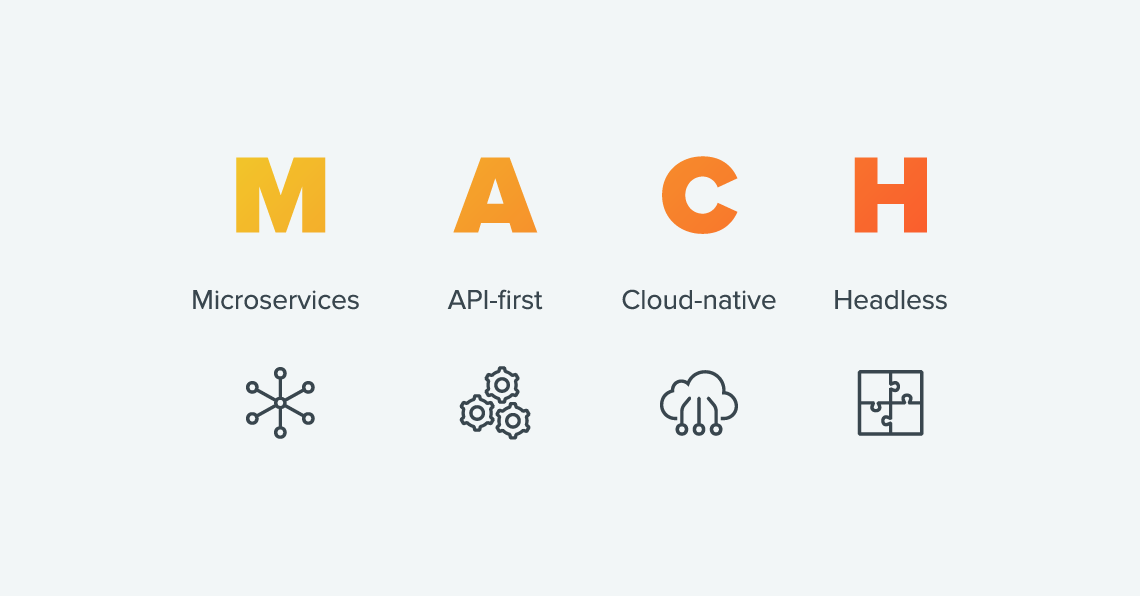
Microservices form the foundation of this architecture, acting as small, autonomous services that work together. Each microservice runs a unique process and communicates through a well-defined, lightweight mechanism (usually HTTP resource APIs) to serve a specific business goal. The microservices approach provides developers with the flexibility to use the best technology stack for their service, enables independent scalability, and ensures the robustness of the system.
API-first approach signifies designing and building APIs at the outset of a project, prior to constructing the software’s user interface. This method ensures the API is robust and offers all the required functionalities. It encourages collaboration among teams and aids in building mobile, web, and IoT applications faster.
Cloud-native is a way of building and deploying applications that capitalizes on the advantages of the cloud computing delivery model. This approach uses technologies like containers, serverless, and service mesh to automate traditionally manual processes. Applications are built in a modular way and managed through agile DevOps processes and continuous delivery workflows.
Lastly, Headless refers to the practice of separating the front-end presentation layer of a website from the backend logic and functionality (such as CMS or eCommerce platform). This separation allows developers to choose the best-fit technology for their needs on the front and back ends, enabling better performance and user experience across multiple channels and devices.
Although it is a relatively recent concept in the industry, MACH is rapidly gaining traction due to its beneficial impact on businesses. MACH technologies facilitate the development of a composable enterprise, wherein each component is designed to be easily integrated, scalable, replaceable, and capable of continuous improvement. By embracing MACH architecture, businesses enjoy the flexibility to select the finest tools available in the market and maintain a structure that enables effortless addition, replacement, or removal of these tools in the future.
What Are the Benefits of MACH Architecture?
By transitioning from monolithic or suite-based technology to MACH architecture, you gain the liberty to select the finest tools available in today’s market while establishing a framework that simplifies the process of incorporating, replacing, or eliminating technologies in the future. In essence, MACH architecture enables you to break free from the cycle of repeatedly re-platforming.
Apart from escaping the constraints of outdated technology and the subsequent hindrance to innovation and growth, here are additional advantages of MACH architecture:
Customer-Centric Approach
One of the foremost benefits of MACH architecture is the ability to implement a customer-centric approach. The headless component of MACH architecture allows businesses to create customized user experiences across various channels – web, mobile, social media, and IoT devices.

By uncoupling the front–end, and back-end, companies can ensure that the content and functionalities of their digital platforms are tailored to the specific needs of the customer, regardless of the touchpoint. This ability to deliver omnichannel journeys enhances customer engagement and satisfaction.
Improved Speed with Less Risk
Microservices, an integral part of MACH architecture, contribute significantly to improving speed while reducing risk. Each microservice is a self-contained unit, allowing for swift updates, adjustments, or bug fixes without affecting the whole system. Consequently, businesses can iterate faster, launch new features quickly, and respond to changing market dynamics without risking system-wide downtime or instability.

Additionally, whether you are a digital agency, system integrator (SI), or enterprise development team, you will have the capability to swiftly deploy prototypes, which assist in validating crucial concepts prior to committing resources to extensive implementations. Rapid prototyping not only aids in bypassing laborious request for proposal (RFP) procedures but also saves valuable time and resources for all parties involved.
Execute a Best-of-breed Strategy
MACH architecture provides the flexibility to execute a best-of-breed strategy. An API-first approach enables businesses to easily integrate their platform with a variety of cutting-edge technologies and third-party systems. This interoperability allows organizations to choose the best solutions for each aspect of their operations, thereby optimizing their tech stack according to their unique requirements while maintaining the valuable elements that contribute to their business’s success.
Seamless Customizations and Innovation
In today’s fast-paced business landscape, the ability to swiftly adapt to evolving customer needs is crucial. By emphasizing innovation, we prioritize the concept of iteration. MACH architecture embodies this principle, enabling businesses to continuously evolve and innovate their customer experience.
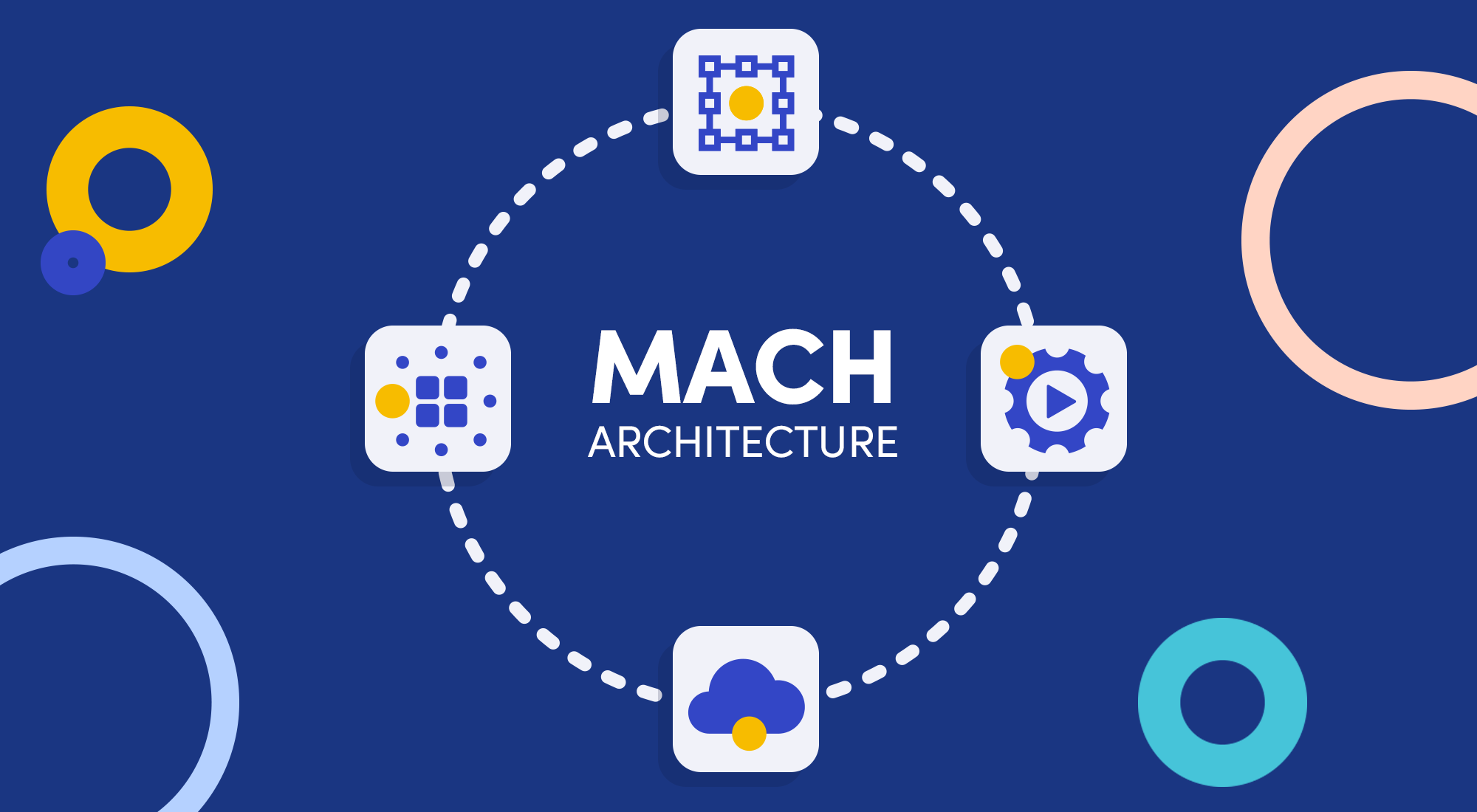
The combination of microservices and API-first design in MACH architecture promotes seamless customizations and innovation. With modular services that can be individually updated or replaced, businesses can readily adapt their platform to suit evolving needs or market trends. Whether you require the addition of curbside pick-up functionality within a short timeframe or the launch of a revamped ordering experience for a prestigious enterprise client, MACH makes these transformations possible. Additionally, the API-first approach ensures compatibility with future technologies, enabling continuous innovation.
Fast Time-to-market
MACH architecture significantly reduces time-to-market. Since each microservice can be developed, tested, and deployed independently, businesses can launch new features or updates faster. Additionally, the API-first approach promotes efficient collaboration between front-end and back-end teams, streamlining the development process.
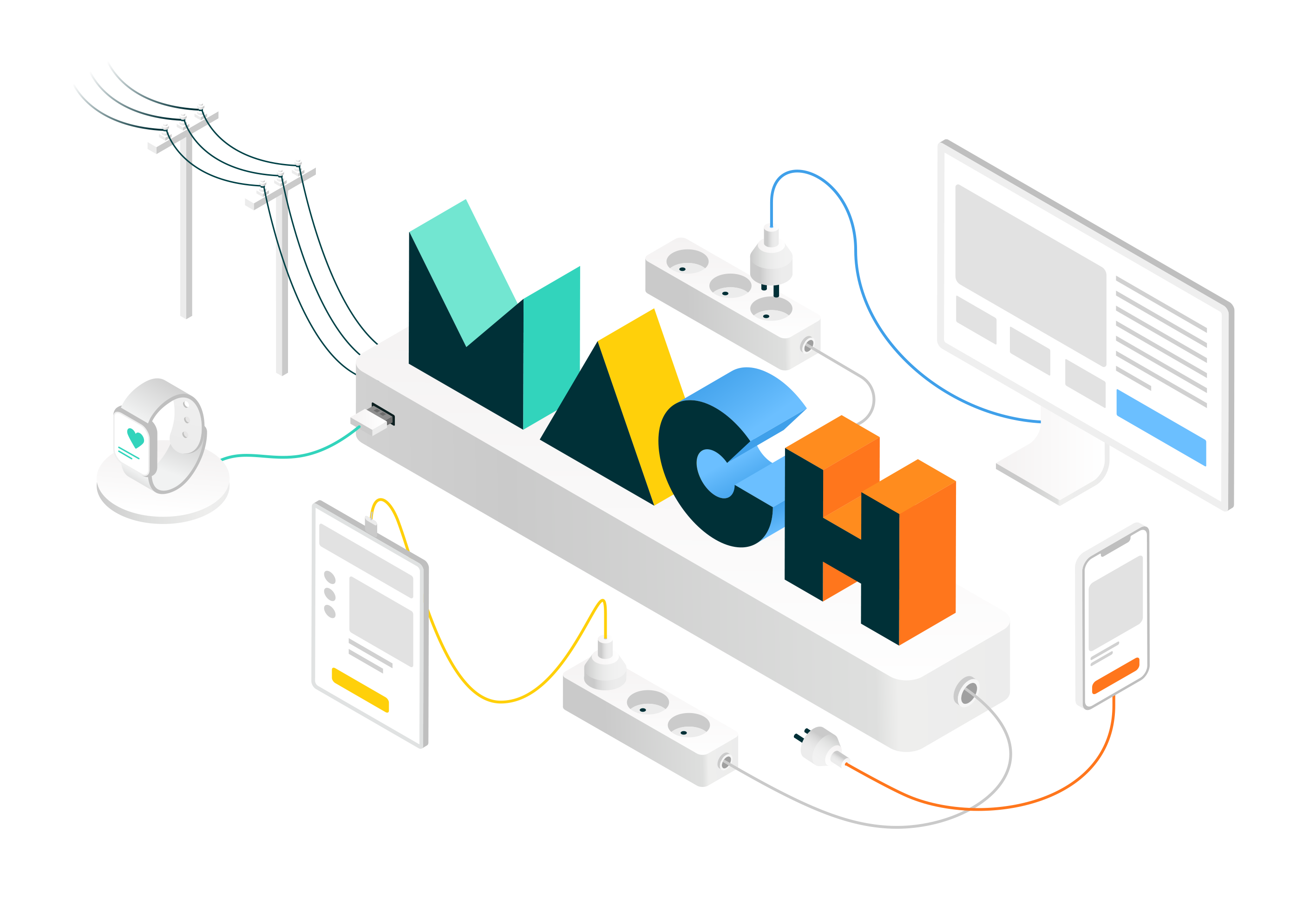
With MACH, developers can swiftly deploy prototypes, enabling businesses to validate essential concepts before committing resources to extensive implementations. This streamlined process of rapid prototyping not only saves time but also reduces costs, allowing businesses to make informed decisions and allocate their resources more effectively. By leveraging MACH architecture, businesses can expedite their development cycle, optimize resource allocation, and achieve cost efficiencies while ensuring the successful launch of their products or services.
Automatic Upgrades
Lastly, the cloud-native aspect of MACH architecture facilitates automatic upgrades. By leveraging the capabilities of cloud providers, businesses can ensure their platform is always running the latest, most secure versions of software and services. This not only saves time but also optimizes system performance and security.
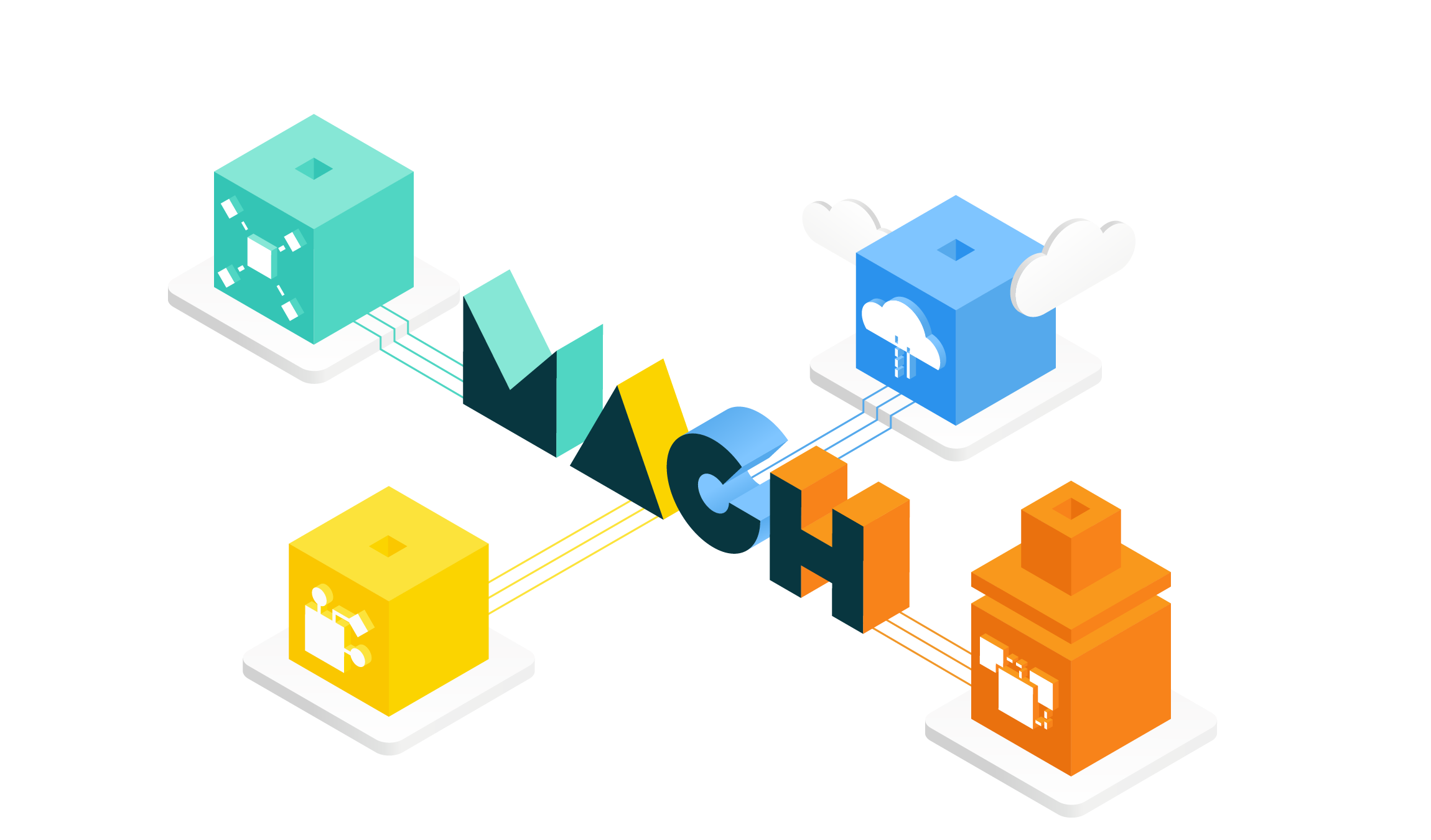
Furthermore, the MACH approach offers cost-saving benefits in terms of DevOps. The modular and composable nature of MACH architecture allows for independent updates and improvements to specific components or services. This decoupling minimizes the dependencies and coordination required between different parts of the system, resulting in reduced DevOps costs. Businesses can allocate their resources more efficiently, focusing on specific areas that require attention or enhancements, without incurring additional overhead.
Monolith Architecture vs. MACH Architecture
There are undoubtedly scenarios where a monolithic approach may be favored. Smaller eCommerce platforms with limited systems, lower complexity, and less need for scalability can benefit from the simplicity of a monolith architecture. However, as more features are introduced and the complexity of the system grows, MACH architecture emerges as the superior choice.
This in-depth comparison between Monolith and MACH architectures will be based on two key criteria: development approach methodology and the benefits they bring to businesses. Before delving into this comprehensive analysis, it is important to understand the definition of the Monolith approach and how it differs from MACH architecture.
Definition
Monolith Architecture represents a traditional model of software development, where the entire application – including the user interface, business logic, and database operations – is designed as a single, cohesive unit. This structure, while easier to develop and deploy, comes with its unique challenges, especially for larger, complex applications.
Monolith architectural style has its limitations. It can become increasingly complex and difficult to manage as the application grows. Making updates or changes to a specific component can necessitate deploying the entire application again. Moreover, the interdependence of components can increase the risk of system-wide failures.
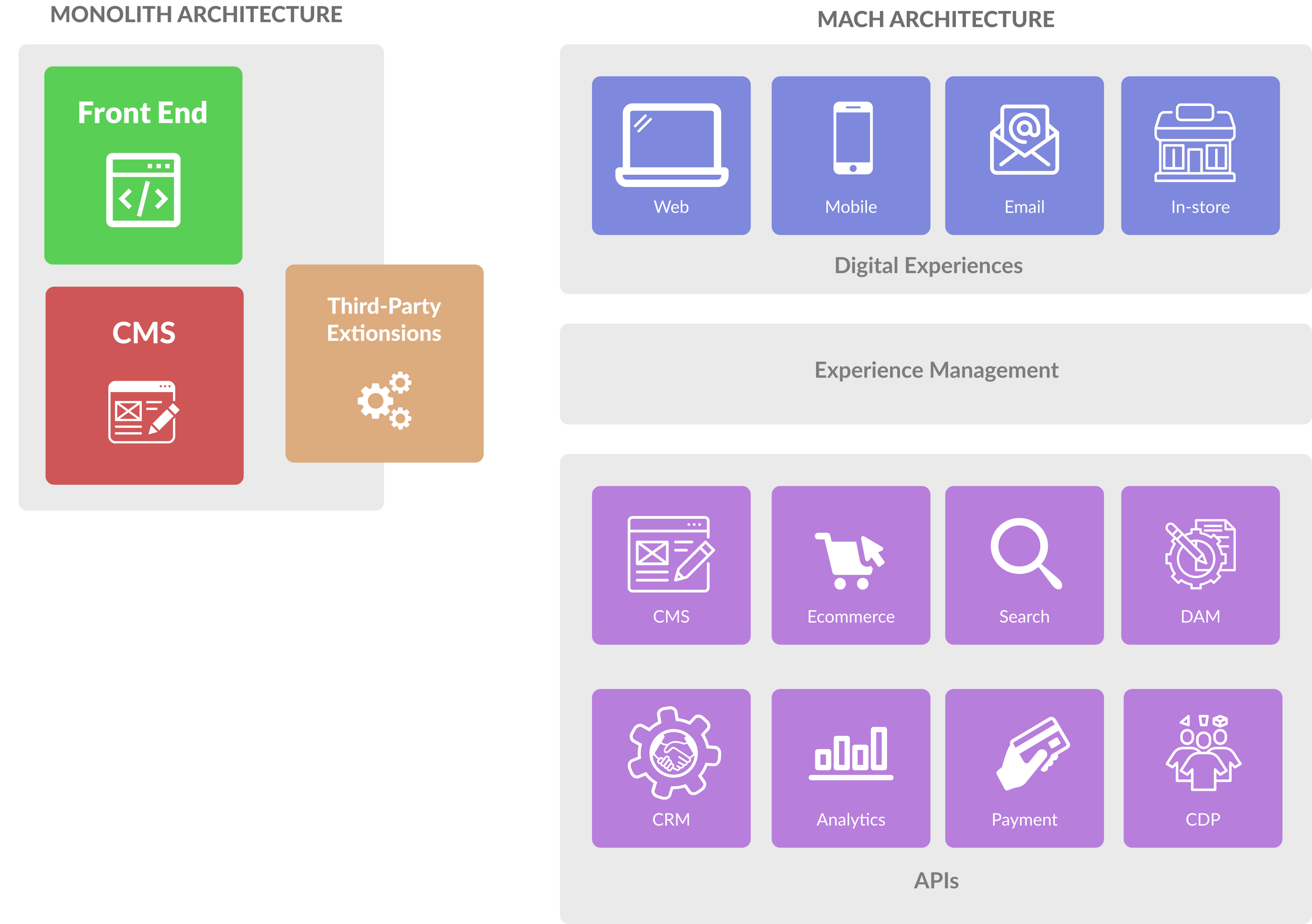
Meanwhile, MACH Architecture, as introduced in the first section, is an acronym for Microservices, API-first, Cloud-native, and Headless, and represents a modern, modular approach to digital platform development.
Development Approach Methodology
Tight Coupling vs Loose Coupling
Coupling in software services represents the degree of interdependence between components. In a tightly coupled system, each component is designed with a specific task in mind and is intricately linked to other components to fulfill this role. Conversely, loose coupling creates a more flexible environment. Components are designed to be independent and versatile, reducing their reliance on one another, and thereby minimizing the ripple effect if a single component encounters an issue.
Monolithic Systems vs Microservices
Monolithic, or non-distributed systems, represent a unified model where all the software’s operations are interlinked and centralized. On the other hand, distributed systems employing microservices architecture disperse functionalities across multiple, independent services. This distribution increases reliability by introducing redundancies and reduces the risk of complete system failure since an issue in one service does not directly affect the others.
Centralized API Management vs API Networks
Centralized API management operates on the principle of data storage in a single repository, from which data is disseminated bi-directionally to the APIs. This centralized control offers consistency but can create bottlenecks and single points of failure. Alternatively, API networks adopt a decentralized approach, leveraging an API gateway that processes and directs requests across multiple APIs. This configuration fosters robustness, flexibility, and increased fault tolerance.
The Benefits for Businesses
Scalability
Monolith Architecture, by its design, entails developing an application as a single, cohesive unit. While this simplicity might seem appealing, particularly in the initial stages of development, it can pose significant challenges when the application needs to scale.
In a monolith, scaling typically involves cloning the entire application, which is both resource-intensive and costly. As the application grows, the interdependence of its components can lead to increasing complexity. Each time a component requires scaling to meet increased demand, the entire application needs to be scaled, regardless of whether other components require additional resources. Consequently, this lack of granular control over resource allocation can result in inefficiencies and unnecessary costs.
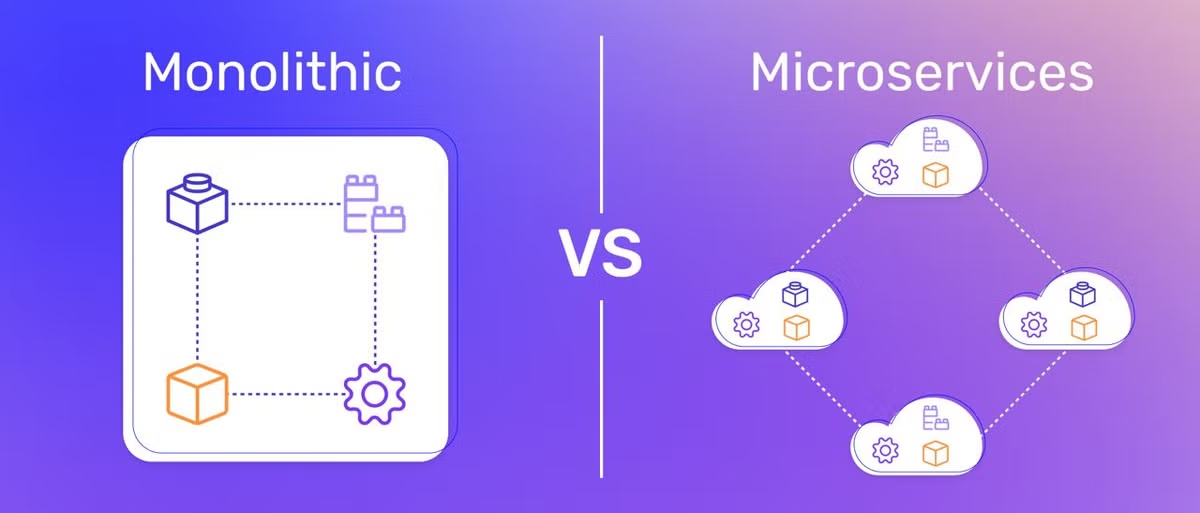
MACH Architecture, on the other hand, with the use of microservices allows each function of an application to operate as a standalone service. This provides the ability to scale services independently, according to their individual demands, which leads to optimal resource utilization. If one component requires more resources due to increased demand, only that specific microservice can be scaled, without affecting the others.
In addition, being cloud-native means MACH applications are inherently designed to leverage the virtually limitless scalability of cloud resources. With auto-scaling features provided by cloud services, MACH applications can automatically scale up or down based on real-time demand, further enhancing their ability to manage peak loads efficiently.
Flexibility
Given the intertwined nature of components in a monolithic architecture, modifying a single part of the application can necessitate changes to other components. Each update or change requires a comprehensive understanding of the entire system to avoid unintentional effects, which can make modifications complex and time-consuming.
Moreover, the need to rebuild and redeploy the entire application for each update can lead to slower release cycles, affecting the business’s ability to adapt swiftly to market changes.
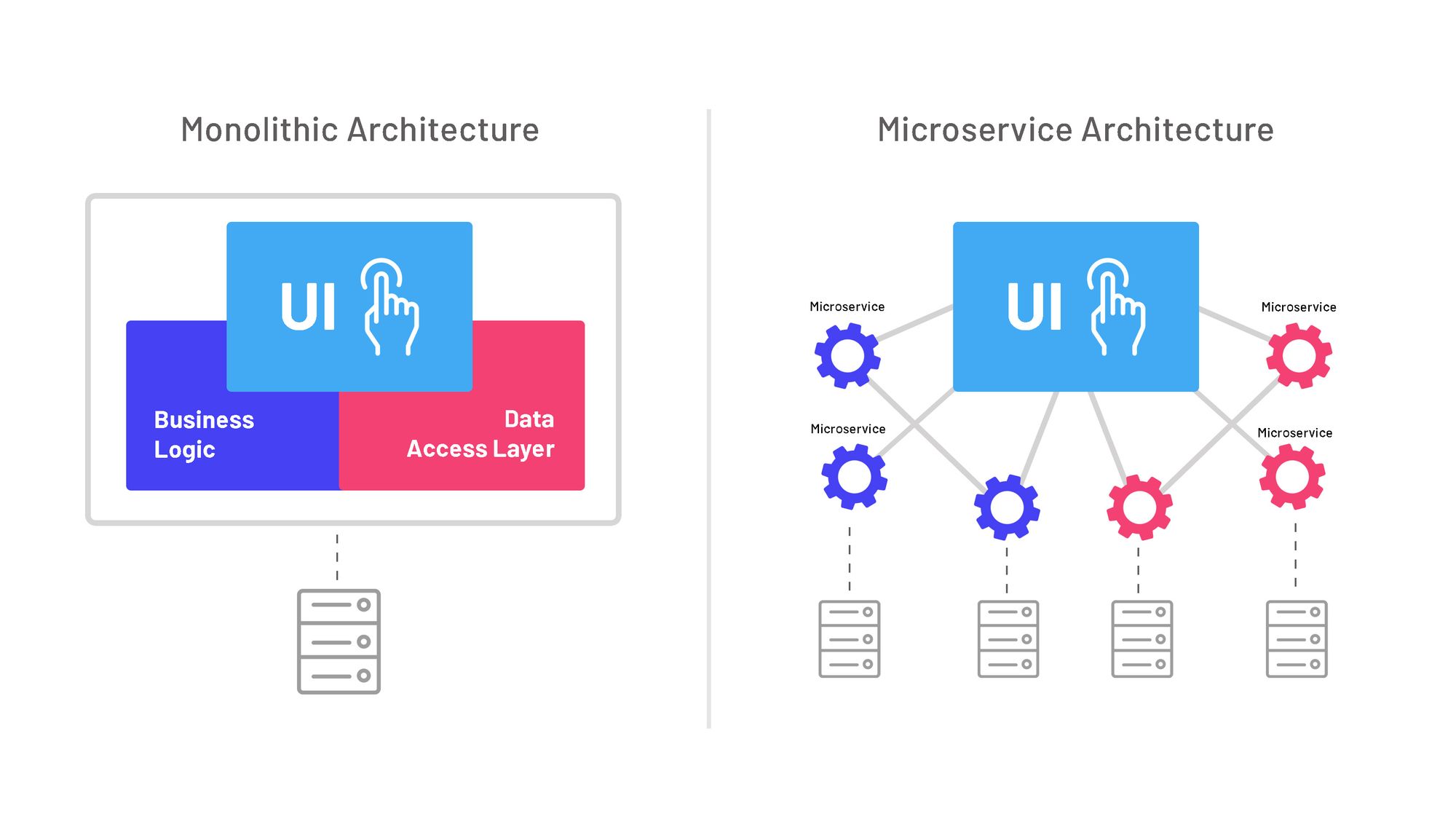
The MACH architecture breaks down the application into smaller, self-contained microservices. This structure allows for changes or updates in individual microservices without impacting others, providing a greater degree of flexibility. For instance, developers can employ different technologies for different microservices, depending on what is best suited for a specific business capability.
The use of APIs further fosters flexibility by ensuring seamless integration between different microservices and other external services. The headless nature of MACH architecture also allows the front-end and back-end to evolve independently, enabling continuous innovation and customizations without disrupting the entire system.
Integration
Monolithic applications typically have a single, often complex, interface for integration, which can make them rigid and less adaptable to interact with various external services. Moreover, as the entire application is tightly coupled, making changes to the integration interface can be cumbersome, often requiring significant modifications to the entire application.
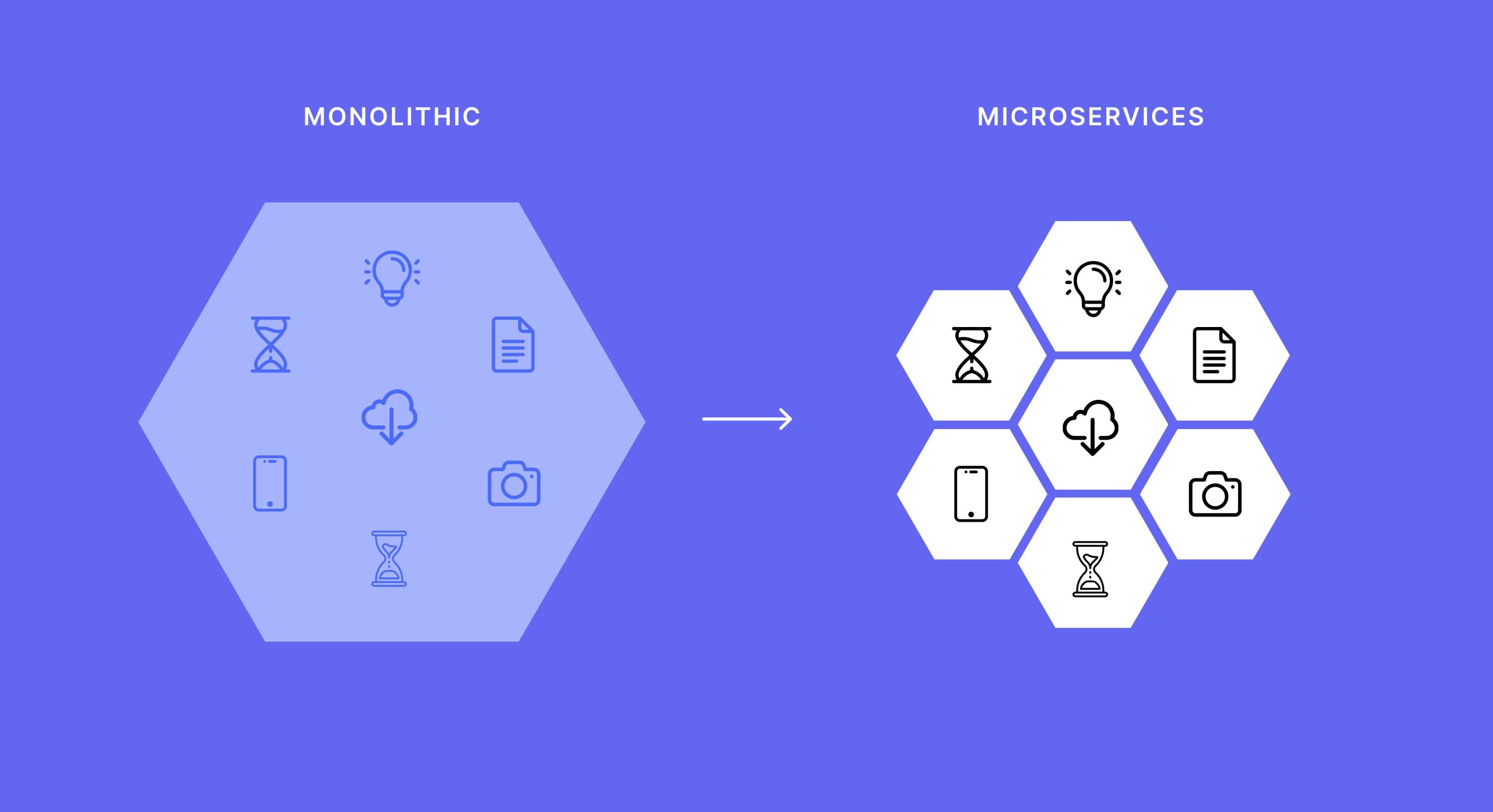
In MACH Architecture, each microservice exposes its functionalities through well-defined APIs. These APIs act as contracts, facilitating easy and efficient communication between various systems and services. An API-first approach ensures that the services can be easily consumed by multiple clients (web, mobile, IoT devices, etc.) and other external systems.
Additionally, the modular nature of MACH Architecture allows for the integration of best-of-breed solutions. Businesses can select the most appropriate technologies, services, or platforms for each specific business capability and seamlessly integrate them into the overall application using APIs.
Development Speed
Monolith Architecture, wherein an application is developed as a single cohesive unit, can provide a quicker startup due to its simplicity. All components are developed together in a unified manner, making it easier to manage in the initial stages.
However, as the application grows and complexity increases, the speed of development can significantly slow down. Any changes, no matter how minor, require the entire application to be tested and deployed, which is a time-consuming process. Moreover, the tightly-coupled nature of components makes it harder to parallelize the development process, as changes in one component might impact others.
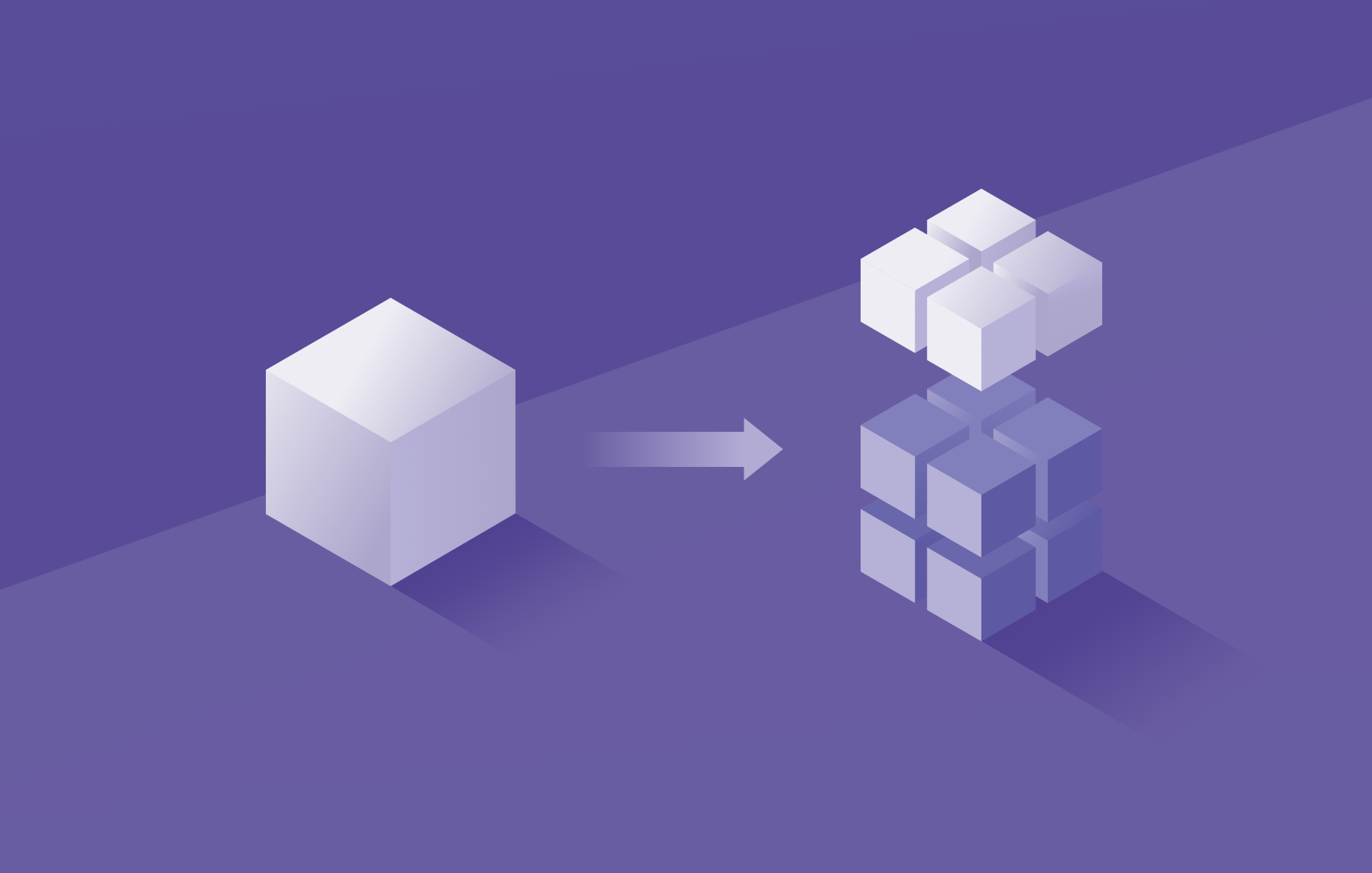
MACH Architecture takes a different approach to application design that can facilitate faster development over the long run.
Although the initial setup of MACH might take longer due to the complexity of designing and coordinating multiple microservices, it enables parallel development and independent deployment of each microservice. This means that different teams can work on different services at the same time, speeding up the overall development process.
Moreover, changes or updates to a microservice can be made without redeploying the entire application, significantly reducing the time spent on testing and deployment. Furthermore, adopting an API-first approach allows for early testing and swift integration of services, further boosting development speed.
Development Cost
Monolith Architecture, with its single-unit application design, often has a lower initial setup cost. The simplicity of development, testing, and deployment can make the monolith approach less expensive to start, making it an attractive option for small projects or startups with tight budgets.
However, as the application expands and complexity grows, the cost of maintaining and evolving a monolith can rise significantly. The interdependence of components makes modifications, debugging, and scaling more difficult and time-consuming. Additionally, the need to redeploy the entire application for every update can lead to increased downtime and potential revenue loss.
The MACH design, implementation, and coordination of multiple microservices can be complex, requiring a substantial initial investment.
Yet, in the long run, MACH can lead to substantial cost savings. The decoupled nature of microservices allows for independent updates and scaling, reducing maintenance costs. The ability to use different technologies for different services also means businesses can choose the most cost-effective solutions for each function.
How to Evaluate MACH Architecture?
As the term MACH architecture gains momentum in the market, it can be challenging to discern which tools truly embody modernity. Furthermore, embracing MACH architecture can range from a straightforward process of replacing the front-end of your existing commerce or content management stack with a headless framework, to a more intricate endeavor of fully adopting MACH architecture as a comprehensive enterprise technology strategy.
Regardless of the approach chosen, it is crucial to have a clear understanding of what to look for to ensure that this decision effectively breaks the cycle of repeated re-platforming. By identifying the key factors and considerations, businesses can make informed choices that align with their goals and drive long-term success.
Microservices
Microservices involve breaking down an application into smaller, independent services, each responsible for a specific business capability. When evaluating this aspect of MACH, ask yourself some questions:
- Does it offer genuine microservices? Can you develop, update, and scale individual platform services independently, minimizing the impact and risk to the overall implementation?
- Can you implement phased roll-outs? Is it possible to introduce lightweight prototypes and minimum viable products (MVPs) in a gradual and iterative manner? This approach is increasingly common and allows for incremental addition and replacement of services over time.
- Does it support a best-of-breed approach? Can you independently add or replace systems and services as needed? The ability to choose technologies that align with both existing tech investments and emerging requirements is crucial for adapting to evolving needs.
API-First
API-first design is about building APIs that can efficiently interact with multiple clients (web, mobile, and other services). Consider the following:
- Has it been developed with an API-first approach or does it rely on an API bolt-on strategy? API-first systems are designed to be fully open, providing complete control over the entire platform. Technologies built from the ground up with APIs offer greater flexibility and integration capabilities.
- Is there access to comprehensive and high-quality documentation? An API-first platform should provide a comprehensive, searchable, self-help knowledge repository that offers well-documented technical resources. This documentation is essential for understanding platform capabilities and assisting in solution development.
- How are integrations facilitated? APIs and webhooks play a crucial role in enabling interactions with other systems. Additionally, many API-first platforms offer pre-built integrations, known as connectors, for seamless integration with common technologies. These connectors simplify the integration process and enhance the platform’s compatibility.
Cloud-Native
Cloud-native refers to the approach of building and running applications that leverage the benefits of the cloud computing model. Evaluate this based on:
- Does it provide unlimited scalability? Leveraging cloud infrastructure, the platform should offer advanced scaling capabilities to accommodate increasing levels of demand as your business grows.
- Is the software delivered as a service (SaaS)? Does it exclusively offer a cloud-based solution without an on-premise option? The vendor should provide a Service Level Agreement (SLA) that outlines the terms and guarantees of the service.
- Are updates and upgrades delivered through continuous delivery without causing disruptive changes? Platform-wide updates should be applied automatically, ensuring a seamless experience for customers without requiring any effort, downtime, licensing costs, or additional fees. Functionality and infrastructure enhancements should be introduced continuously over time.
Headless
The headless architecture separates the front-end presentation layer from the back-end logic. To evaluate this:
- Can you access the administrative or buyer interface without requiring extensive development time? Genuine headless platforms do not come with pre-existing front-end interfaces. However, you may discover pre-built components, interfaces, or templates that can be leveraged to expedite the creation of your desired user interface (UI).
- Is there freedom and flexibility in developing and deploying the user experience? As headless technology does not impose a specific front-end user experience, developers have complete control over the UI development and deployment process. Solutions can utilize any preferred technology stack, programming language, or front-end framework to create a tailored and adaptable user experience.
In Conclusion,
As we navigate through an era marked by rapid digital transformation and constant innovation, businesses are seeking robust, scalable, and flexible solutions to maintain competitiveness. The MACH (Microservices, API-first, Cloud-native, Headless) architecture presents itself as a compelling choice in this context.
MACH architecture holds significant potential for businesses seeking to future-proof their digital strategy and accelerate their innovation cycle. Its core principles of flexibility, scalability, and independence stand as a solid foundation for building resilient and adaptable digital ecosystems, capable of meeting the demands of the modern, ever-changing business environment.
Subscribe to our newsletters now to not miss out on any of our insightful updates.











